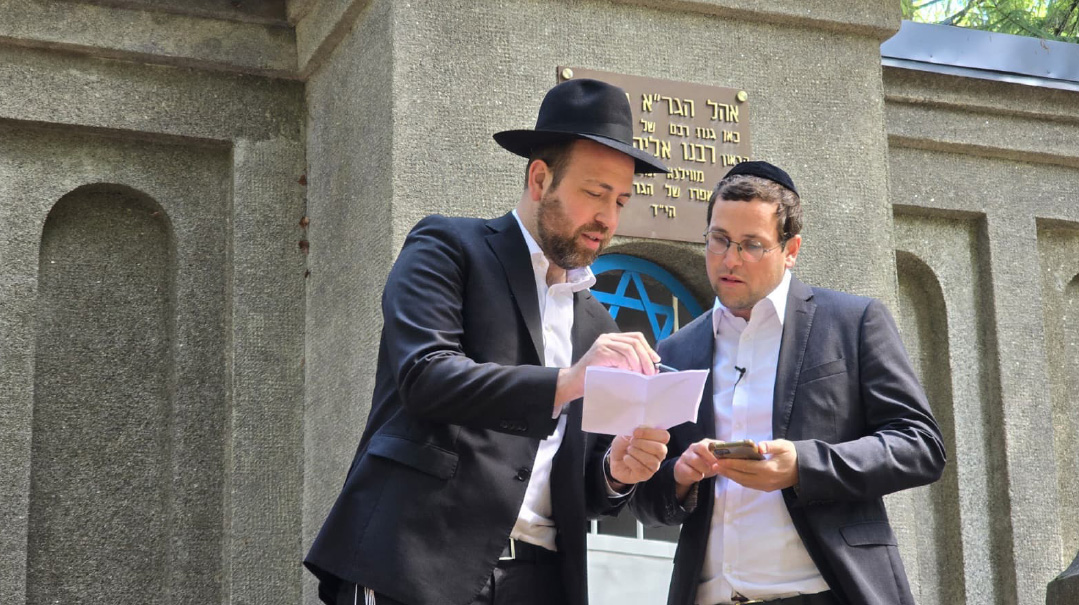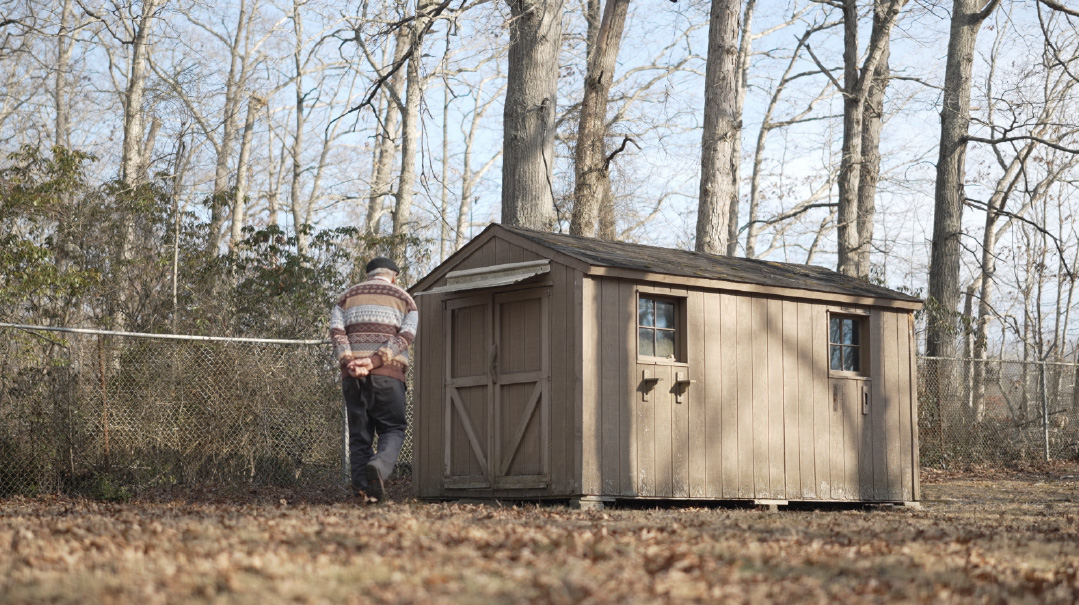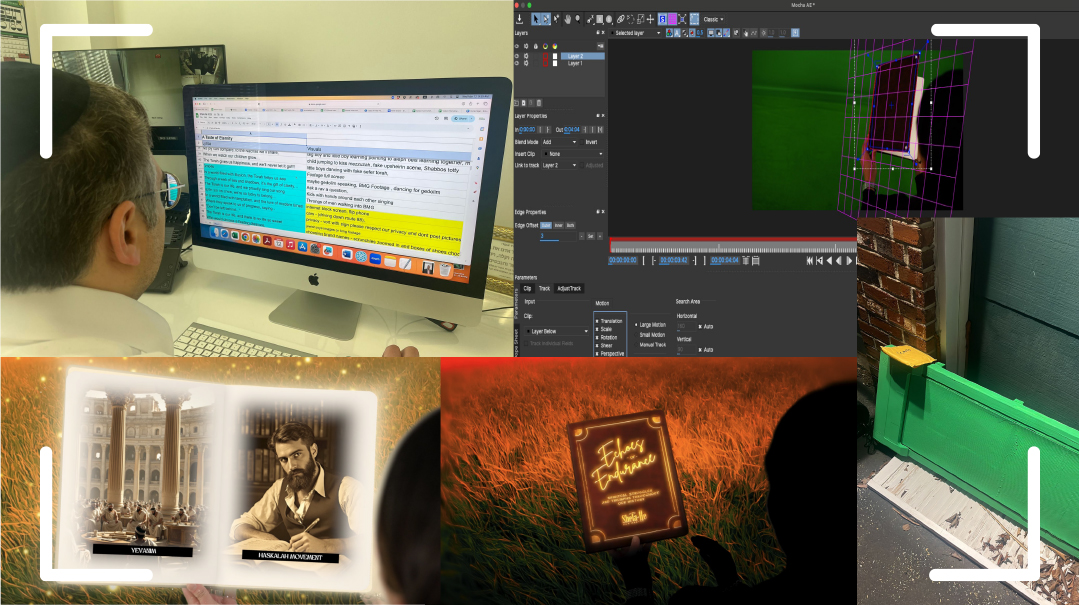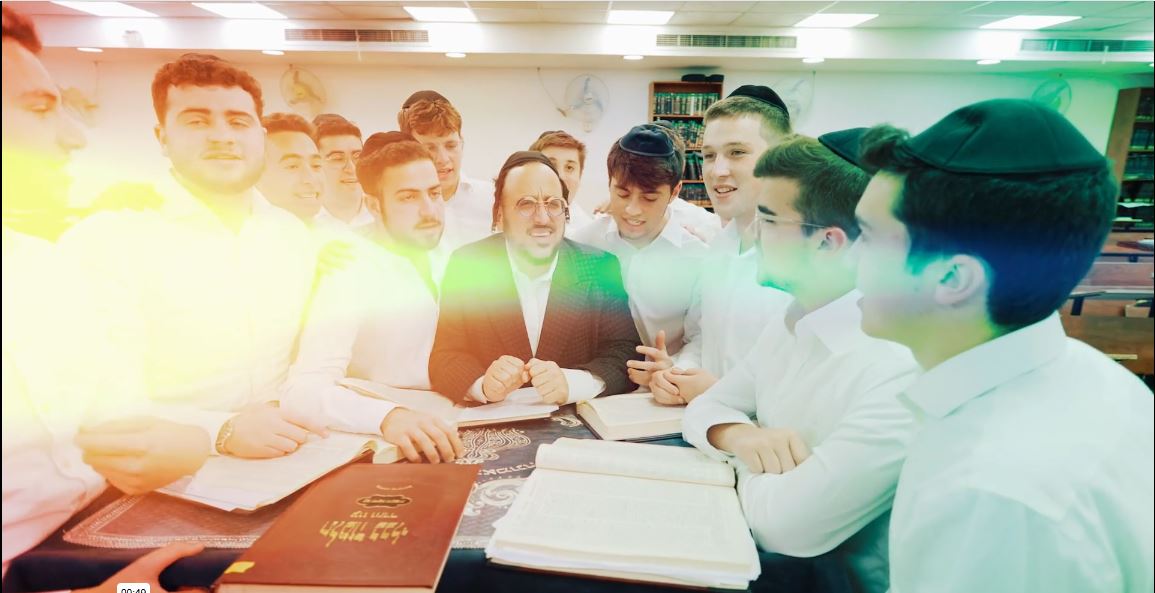Deal of a Lifetime
| February 6, 2024Line by line, page by page, day by day, these men keep reviewing their learning — and we’ve been recording their progress, literally from the get-go

Reel Chronicles: Outtakes from a Video Production Studio
Client: Kinyan Hamasechta
Objective: Feature and Highlight Videos for a Worldwide Event
Film Locations: Lakewood, New Jersey, and Brooklyn, New York
Project Deadline: January 2024
Humble beginnings
Back in the spring of 2017, a caller who introduced himself as Yitzchok Wagner of Pomona, New York, inquired about making a video for his chaburah’s siyum. He told me he was part of a group of a few chaburos called Kinyan Hamasechta, an initiative that evolved from Rabbi Dovid Newman’s Vhaarev Na program, designed to help working men find that sweetness in learning.
The main reason balabatim struggle to find satisfaction in their learning is an underlying lack of comprehension, he explained. At that point, Kinyan Hamasechta devotees had already formed 15 groups around the Tristate area, with more locations expressing interest as well.
“We keep to a daily pace of small, attainable goals — sometimes as little as a few lines of Gemara,” Yitzchok said. “We encourage writing notes in the Gemara, and there’s a tremendous focus on constant chazarah. With this approach, people are able to truly acquire their learning, many for the first time in their lives.”
The concept resonated, and the conversation segued to what sorts of features we could produce for the group’s upcoming siyum on Maseches Succah. Yitzchok wanted two videos, each with its own goal: The first, to acknowledge the hard work of the participants in reaching this milestone, would feature rabbanim sharing brachos and congratulating them on their success. The second video, on the other hand, would be for the general public, showcasing the program itself and hopefully encouraging the start of more chaburos.
“The success is real, we just need proper exposure so we can spread the word,” Yitzchok said.
Once we understood his direction, we filmed gedolim, including Rav Yaakov Hillel, rosh yeshivah of Ahavat Shalom in Jerusalem, and Rav Yosef Elefant, a rosh chaburah in the Mir Yerushalayim, all expressing admiration and good wishes. We also interviewed several chaburah members who shared their excitement, from which we built the second feature. Both videos hit the spot, and not only was the siyum a big success, but word of the program’s potential began to spread.
The Proposal
Fast-forward seven years, and Kinyan Hamasechta is no longer a fledgling initiative but a worldwide movement with more than 270 chaburos across the globe. We’ve made video clips featuring events in England, Chicago, and Florida.
I like to think I have a warm relationship with all of our clients, but there’s something special about being a part of a project from nearly the beginning. Yitzchok Wagner has told me several times how that first feature we made was instrumental in sparking the movement, and I look forward to hearing from him before the now-global event they hold in New Jersey’s Bell Works event center each year.
To discuss this year’s feature, I held a conference call with Yitzchok, Kinyan Hamasechta’s event strategist Rabbi Yaakov Giniger, and our senior production manager, Moshe Niehaus.
Yitzchok started by explaining that this year, Kinyan Hamasechta wants to highlight a new angle.
“There’s the shiur and the chavrusas,” he said, “but in addition, many of the participants find pockets of time in their busy day to sneak in that extra chazarah on their own. We’d like to highlight how the learning becomes embedded in participants’ lives, transforming their entire day.”
He asked me if we could follow a few Kinyan participants as they go through their busy day, capturing those moments where they grab a few minutes of precious chazarah.
“I love it!” I replied. “It’s a real example of show, don’t tell, where seeing businessmen weave their limud into their daily lives speaks volumes about the success of the program, more eloquently than the typical sit-down interview.”
Rabbi Giniger asked if we should feature two people or three, but after discussing the pros and cons, Moshe Niehaus interjected, “We still have plenty of time. Let’s start with two, and if we see that adding another participant will improve the feature, we can always do that closer to the event.”
Scripted B-roll
Our first step was to interview our two subjects to get a better sense of the stories they’d be telling. We knew we needed them to candidly discuss their struggles as well as their successes to make for a compelling feature — and it was great, because they really opened up, sharing that drive to find their path in learning and the transformative effect Kinyan had on their lives.
Next, post-production manager Mrs. Rivky Liebenstein cut up the interviews and built them into cohesive narratives. This was where the feature veered off the beaten path of an “interview video.” On a standard feature, we can film secondary footage even before the interview, because we know what we’ll need — in this case, standard shots of the chaburah learning with a focus on our two protagonists.
But since we had a very specific narrative, Moshe Niehaus actually wrote up a shot list, almost as if this was a scripted piece, corresponding to the storyline Mrs. Liebenstein had built. Moshe Niehaus asked our cinematographer to spend a day with the men, and he sent him the shot list, requesting that he capture specific moments such as “early morning routines,” “interaction with family,” and “learning sedorim, by himself and with the chaburah.”
Soon after he sent the list, Moshe Niehaus received a call from the cinematographer.
“I’m looking at the shot list you provided,” he said. “You requested footage of the protagonist ‘wanting to want to learn.’ I think I understand what you mean, but how in the world do I capture that on video?”
It was a fair question, and Moshe had the perfect plan.
“It’s really about him trying but not quite finding his stride, right? Let’s have him sitting by his Gemara, but instead of swaying over it with a look of concentration, have him stare off into the distance. The contrast of the open Gemara to his expression of defeat should convey that narrative.”
Following and Filming
Our objective was clear: follow these two men going about their day. The problem with scheduling busy people is, well, they’re busy. One of the men in particular was very difficult to book. After a couple of cancelations and rescheduling, we blocked out a day with him — until our would-be subject let us know that he deserved a mazel tov, his wife had just given birth.
Finally, we managed to coordinate schedules, and our cinematographer met up with him in the early morning hours. He captured this man interacting with his children, at his shiur, and learning with his chavrusa, and most importantly, those small pockets of time he carved out in the middle of his day for brief chazarah.
The last step of the storyline was to turn the narrative into a feature video. Associate VFX director Jeremy Lewis used Mrs. Liebenstein’s storyline as a voiceover with the corresponding footage.
A turning point for both of our main characters was the 2018 Kinyan Hamasechta siyum in Passaic, New Jersey, which they had both attended because of a friend’s request. Seeing and hearing the raw and real successes of other participants was an impetus for them to take the plunge and sign up.
“We have footage from that event!” I reminded Jeremy. “I think you made the highlight clip that year. Can you search through the footage to see if we can spot our two protagonists?”
It was a lot to sort through, but Jeremy was able to find both of them, and we slipped that footage in to back up the narrative, bolstering the end product.
Highlight Reel
In addition to the feature video, Kinyan Hamasechta asked us to cover the event itself and then put out a highlight clip later the same week.
For most events, highlights — a quick recap of the night that leaves people with warm memories of the successful evening — extend campaign excitement just a bit longer. Not so with Kinyan Hamasechta. As their event would be the one time they had thousands of participants under one roof, a highlights reel would be a prime opportunity to capture the global reach of the movement.
With this in mind, our objective was to create a quasi-promotional video, something showcasing Kinyan Hamasechta’s scope and power and encouraging others to join.
We took several approaches in creating the clip. To illustrate how widespread the movement has become, we did something called “run ’n gun” interviews. While filming at the event, we called over random participants and asked them to candidly share short thoughts. Simple, brief questions such as, “Where are you from? Why did you join Kinyan? How has it changed your life?” can produce valuable soundbites. It’s less formal than a sit-down interview, and the expression of raw emotion can be very powerful.
Additionally, the variety of the crowd both from a geographic standpoint and the level of learning helped reinforce the narrative that this movement is truly for everyone. The organizers always bring in powerful speakers for the evening, and it’s an opportunity for us to collect quick thoughts from some of today’s leading rabbanim. As I attended the event, I made sure to take notes marking the speakers’ more engaging lines, and I asked editor Mrs. Devorah Loeb to go through the footage to pull out those thoughts, while searching for others as well.
Lastly, we wanted to capture the emotion of the evening, that feeling of unity and accomplishment and the celebration of the participants’ hard work and achievements. Jeremy Lewis was watching through the event footage when he saw me walking by his office.
“Moshe, Eitan Katz performed at the event, right? What if, instead of backing the highlights with instrumental music, we use tracks of Eitan performing?”
I loved the idea, as it would replicate the mood and give the reel live-event energy.
Callback
The true success of a video should be measured by its impact, but unfortunately, we don’t always have the metrics to track that, and especially when it’s about creating awareness, success is difficult to quantify. I knew we had achieved our goal, though, when Jeremy Lewis walked into my office at the end of the project.
“We both know what a busy day I have,” he said frankly. “I do have my chavrusas, but I never really thought there was room for more. After editing these videos and seeing how these men manage to find precious minutes while balancing their hectic lives, I’m going to add another seder to my day.”
Wow. Small sample size, but that’s what it’s all about — inspiring change, one person at a time.
(Originally featured in Mishpacha, Issue 998)
Oops! We could not locate your form.







